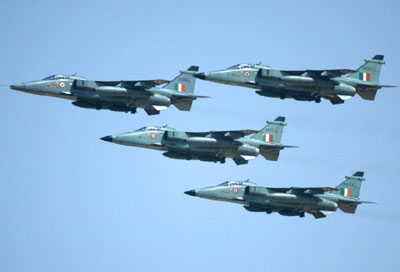 New Delhi:
New Delhi: An indigenous AWACS (Airborne Warning and Control System), that enables the Indian Air Force (IAF) look up to 400 km into Pakistan and China while remaining in the safety of its own airspace, should be available by about 2020, its developer says.
Avinash Chander, head of India's Defence Research and Development Organisation (DRDO) and Scientific Adviser to the defence minister, told India Strategic (www.indiastrategic.in ) in an interview that some initial capabilities had been achieved and it is now natural to progress towards creating this tremendous force-multiplier for the IAF, which currently has three AWACS and has projected a requirement of 10 in the next decade.
The radar, the key element of the AWACS, will be a rotating rotodome with electronic scanning, and as the space requirements for the equipment are considerable, DRDO was looking at either the Boeing-767 or Airbus A- 330 as the platform.
There have been some discussions with their manufacturers on what can be done. Once the specifications are frozen and government sanction obtained, an Expression of Interest would be invited from them, and then an RfP (Request for Proposals - or tender) would be issued.
The development of the radars and sensors would continue in parallel. After that, the key task and challenge would be their integration on the aircraft.
"Our design works are progressing but the key is the integration of the equipment on the aircraft," Avinash Chander observed.
The three IAF AWACS comprise the Israeli Phalcon radar mounted aboard a Russian IL-76 aircraft.
Two smaller Airborne Early Warning Systems fitted on Embraer 145 aircraft should also be with IAF by mid-2014.
But numbers are important as not all aircraft can be in the air all the time and IAF has large areas to scan all around India.
As for the rotodome, Chander explained that the static radars, which scan electronically, have some limitation of a blind area as it is fitted on the fuselage of an aircraft. With a rotating dish - or antenna - it can cover 360 degrees.
The radar being developed by DRDO will have both physical rotation and electronic rotation of the radar waves, Avinash Chander said.
Notably, as both the aircraft being looked at are civilian airliners, their maintenance will not be a problem as there are a large number of engineering and technical personnel available in India. The choice of payload in terms of weight and configuration would eventually help decide the choice of the aircraft as well.
The cost of an AWACS depends upon the choice of the platform, that is, the aircraft, onboard systems, effort in technical integration and the numbers required to defray the development expenses, estimated at around $300 million (Rs.18.5 billion) per fully loaded aircraft.
It would be cheaper perhaps initially to buy a ready made system like the Phalcon but if the country is looking at control of technology that the Indian forces would use, then it is imperative to develop it with indigenous systems to the extent possible and integrate it at home. That would raise the cost by at least 25 per cent but ensure a strategic independence in operating it.
 New Delhi: An indigenous AWACS (Airborne Warning and Control System), that enables the Indian Air Force (IAF) look up to 400 km into Pakistan and China while remaining in the safety of its own airspace, should be available by about 2020, its developer says.
New Delhi: An indigenous AWACS (Airborne Warning and Control System), that enables the Indian Air Force (IAF) look up to 400 km into Pakistan and China while remaining in the safety of its own airspace, should be available by about 2020, its developer says.